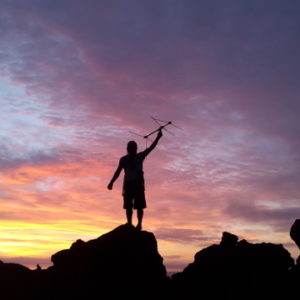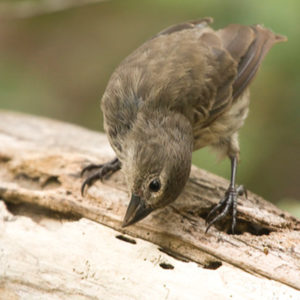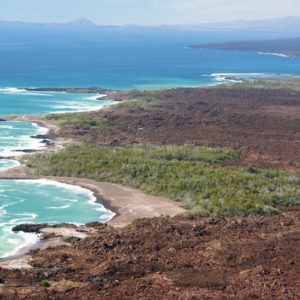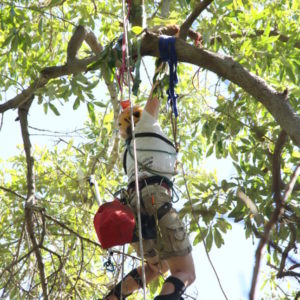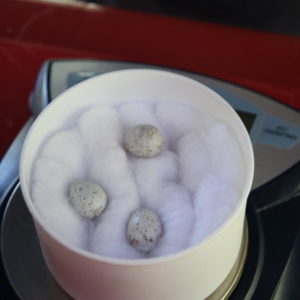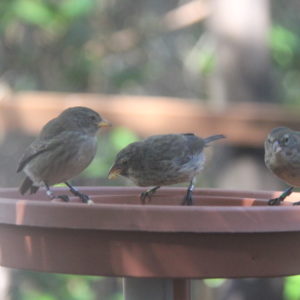Project Description
The Mangrove Finch Project
The Critically Endangered mangrove finch (Camarhynchus heliobates) is the rarest bird in the Galapagos Islands. The estimated population size is just 100 individuals and over the last eight years there have been fewer than 20 breeding pairs. Historically distributed throughout mangrove habitat on the two western islands (Isabela and Fernandina), extensive surveys in the 1990s confirmed a current range of just 30ha of mangrove forest on North West Isabela, making it one of the most range restricted birds in the world.
The exact reasons for historic declines are not entirely understood although at present the species is threatened primarily by introduced species – predation from introduced rats (Rattus rattus) and parasitism of nestlings from the larvae of the introduced fly Philornis downsi. Additional threats come from the potential introduction of avian diseases, reduced genetic diversity, hybridization with the closely related woodpecker finch (C. pallidus) and habitat loss as a result of volcanic activity and climate change.
The Mangrove Finch Project works to conserve the mangrove finch and ensure its long term survival within its natural habitat. Ongoing introduced rat control has succeeded at significantly reducing egg predation. Head-starting (collection of eggs/nestlings from the wild, artificial incubation and hand rearing of young followed by the release of juveniles back into the wild) has been conducted for four years in order to increase annual fledging success by rearing nestlings away from the threat of P. downsi. To date 39 hand-reared individuals have been released with observed survival and recruitment into the breeding population. Additionally a method for protecting nestlings in the wild is being trialed and it is hoped that this will meet with success and provide a more effective conservation management technique. Long term project aims include increasing population size and reestablishing a viable mangrove finch population at a site within its historic range.
While the mangrove finch remains Critically Endangered it is imperative that effective conservation management continues to ensure the future conservation of the rarest of Darwin’s finches.
Acknowledgements:
Many thanks to generous donations of equipment for the 2019 mangrove finch field season. We received donations of tents, ropes and climbing material from Bluewater ropes, Sterling Ropes, Kelty, Club de Andinismo Politécnico, Tecnicos Verticales.
Your valuable contribution will support the efforts for the conservation of the mangrove finch in Galapagos.


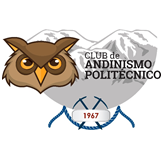
Although the Critically Endangered mangrove finch is in need of long term conservation management, funding beyond the next 12 months is not secure. Help us to conserve the future of Darwin’s rarest finch. Every little bit counts to help us cover the costs of on the ground conservation work. These costs are high due to the remote location where the mangrove finch remains. The Mangrove Finch Project does not receive government funding and relies on the generous support from various donor groups and individuals
Funding
1. Donations go directly to the implementing agencies (Charles Darwin Foundation, or Galapagos National Park Directorate) or are managed by GCA.
2. GCA incurs only a few operational costs (running the website, bank fees etc) and asks for a contribution of 1 USD per donation to contribute to these costs, unless you specify that you prefer all of your donation to be used directly for the project.
3. The implementing agency will provide an annual breakdown of how the donation sent by GCA was used. This will be sent to all donors upon request.
$10
Papayas and eggs to feed mangrove finch chicks in captivity$20
Two weeks fresh water supply for the field team$50
One day's camp supplies for the field team$80
One ascender climbing equipment to access nests up to 20m in the canopy$100
One week's participation and training for a local volunteer.$150
Two week's perishable supplies for hand rearing chicks.$300
One radio transmitter to monitor fledgling survivalDonate a Special Amount
View Other Projects
